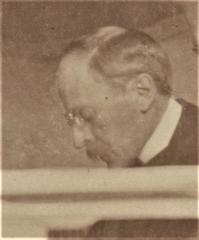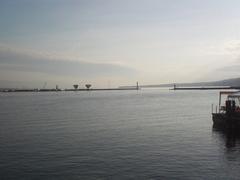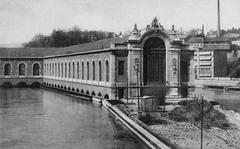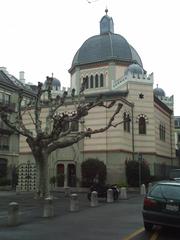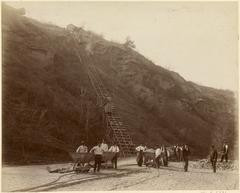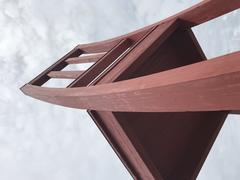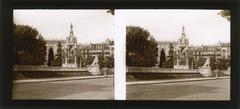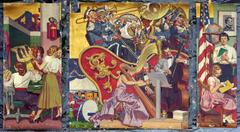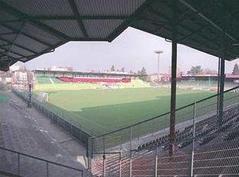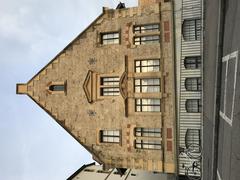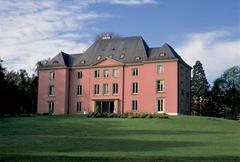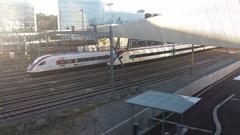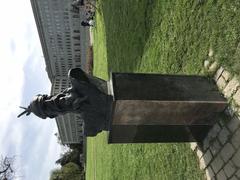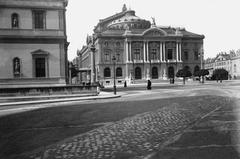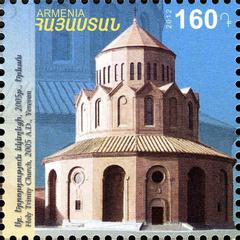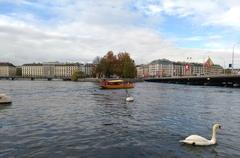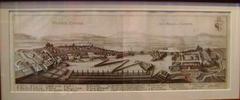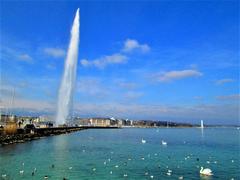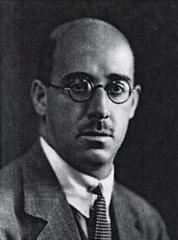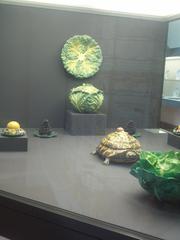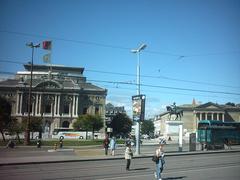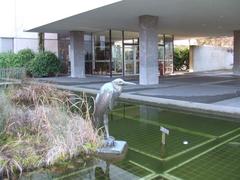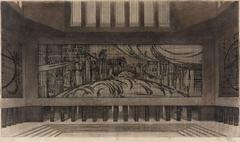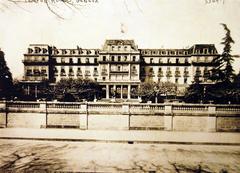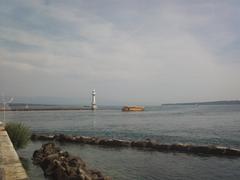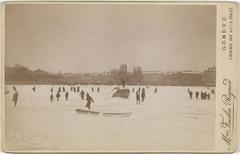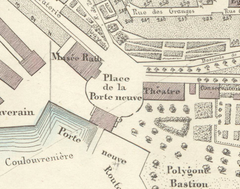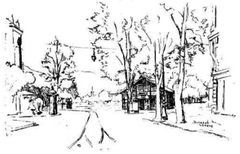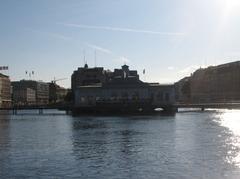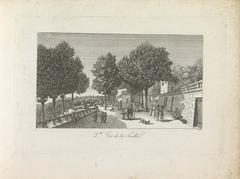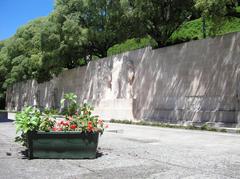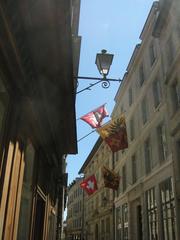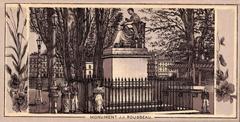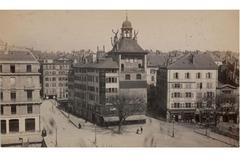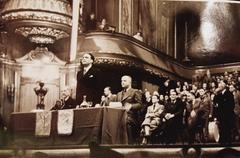Comprehensive Guide to Cathédrale Saint-Pierre in Geneva, Switzerland
Published Date: 18/07/2024
Introduction to Cathédrale Saint-Pierre
St. Peter’s Cathedral, also known as Cathédrale Saint-Pierre, is a beacon of historical and architectural grandeur in the heart of Geneva, Switzerland. This monumental structure not only stands as a place of worship but also serves as a testament to the city’s rich and diverse heritage. From its origins as a 4th-century Roman temple to its transformation into a Protestant cathedral during the Reformation, St. Peter’s Cathedral encapsulates centuries of religious, cultural, and architectural evolution.
As one of Geneva’s most iconic landmarks, it attracts countless visitors eager to explore its Romanesque foundations, Gothic influences, and neoclassical additions. This guide aims to provide a comprehensive overview of the cathedral’s history, architectural marvels, and essential visitor information, ensuring that your visit is both enriching and memorable. Whether you’re a history enthusiast, an architecture aficionado, or a casual traveler, St. Peter’s Cathedral offers a unique glimpse into the past and a profound understanding of Geneva’s development over the centuries. For more detailed historical insights, check the Sacred Destinations and the Cathedrale Geneve Official Website.
Table of Contents
- Introduction
- Historical Background and Significance
- Visitor Information
- Architectural Features of St. Peter’s Cathedral
- FAQ
- Conclusion
- Call to Action
Historical Background and Significance
From Roman Temple to Protestant Cathedral
The site of St. Peter’s Cathedral boasts a history stretching back to the late Roman Empire. Archaeological excavations have revealed the remains of a 4th-century Roman temple, suggesting Geneva’s early significance as a religious center. This early structure was followed by a succession of churches, each built upon the foundations of its predecessor.
The first Christian basilica on the site, dedicated to Saints Peter and Paul, likely dates back to the 6th century. This early church served as the cathedral for the Bishop of Geneva, highlighting the city’s growing religious importance. Over the next few centuries, the basilica underwent several renovations and expansions, reflecting the evolving architectural styles and the growing prosperity of Geneva.
The Romanesque Transformation
The 12th century ushered in a period of significant change for the cathedral. Bishop Humbert de Mouruz initiated a grand reconstruction project, transforming the existing structure into a magnificent Romanesque edifice. This new cathedral, consecrated in 1160, featured the characteristic round arches, thick walls, and sturdy pillars of the Romanesque style. The iconic twin towers, a defining feature of St. Peter’s Cathedral, were also added during this period, although they underwent further modifications in later centuries.
Gothic Influences and Reformation Echoes
While the Romanesque style formed the cathedral’s core, subsequent centuries saw the incorporation of Gothic elements. The 13th and 14th centuries witnessed the addition of the elegant Gothic chapel of the Maccabees, a testament to the evolving architectural tastes of the time. This blending of architectural styles created a unique and visually captivating structure that reflects the cathedral’s long and layered history.
The 16th century marked a turning point in the history of St. Peter’s Cathedral and Geneva itself. The Protestant Reformation, spearheaded by figures like John Calvin, swept through Europe, leaving an indelible mark on the religious landscape. In 1536, Geneva embraced the Reformation, and St. Peter’s Cathedral became a Protestant church. This shift had a profound impact on the cathedral’s interior, as religious imagery and decorations associated with Catholicism were removed or covered up, reflecting the iconoclastic principles of the Reformation.
A Symbol of Reformation and Enlightenment
St. Peter’s Cathedral quickly became a central location for the dissemination of Protestant teachings. John Calvin, a leading figure of the Reformation, preached from its pulpit for many years, attracting followers from across Europe and solidifying Geneva’s reputation as a center of Protestant thought and scholarship. The cathedral’s association with Calvin and the Reformation cemented its status as a significant landmark in the history of Protestantism.
Beyond its religious significance, St. Peter’s Cathedral also played a role in Geneva’s intellectual and cultural development. The city became a haven for thinkers and reformers, fostering an atmosphere of intellectual exchange and debate. The cathedral, with its historical weight and central location, served as a meeting point for these individuals, further intertwining its story with the intellectual currents of the time.
Architectural Evolution and Modern Restoration
Over the centuries, St. Peter’s Cathedral underwent various renovations and restorations, reflecting changing architectural trends and the need to preserve the aging structure. The 18th century saw the addition of the neoclassical facade, a departure from the earlier Romanesque and Gothic styles, showcasing the architectural tastes of the era. This blend of architectural styles, layered over centuries, contributes to the cathedral’s unique character.
In the 20th century, a major restoration project was undertaken to address years of wear and tear and to restore the cathedral to its former glory. This meticulous effort involved archaeological excavations, structural reinforcements, and the careful cleaning and restoration of the interior and exterior. The project, completed in 1951, ensured the preservation of this historical treasure for future generations.
Visitor Information
Visiting Hours
St. Peter’s Cathedral is open to visitors throughout the year. The regular visiting hours are as follows:
- Monday to Saturday: 10:00 AM - 5:30 PM
- Sunday: 12:00 PM - 5:30 PM
Please note that the cathedral may have different hours during special events or religious ceremonies. It is advisable to check the official website for the most current information. (St. Peter’s Cathedral Official Website)
Tickets and Guided Tours
Admission to St. Peter’s Cathedral is free, but there is a fee for accessing the tower and the archaeological site beneath the cathedral. Here are the ticket prices:
- Tower Access: CHF 5 for adults, CHF 2 for students and children
- Archaeological Site: CHF 8 for adults, CHF 4 for students and children
Guided tours are available in multiple languages and provide an in-depth look at the cathedral’s history and architecture. It is recommended to book these tours in advance.
Travel Tips
- Best Time to Visit: Early mornings or late afternoons are the best times to visit to avoid crowds.
- Nearby Attractions: Combine your visit with other historical sites in Geneva, such as the Reformation Wall and the Museum of Art and History.
- Photography: The cathedral offers numerous photographic spots, especially from the tower, which provides panoramic views of Geneva.
Architectural Features of St. Peter’s Cathedral
Romanesque Foundations and Early Gothic Influences
The cathedral’s construction began in the 12th century on the site of earlier religious structures, with the nave being the oldest part of the building, dating back to the Romanesque period (circa 1160-1252). This early style is evident in the rounded arches, thick walls, and small windows typical of Romanesque architecture. The use of local limestone, molasse, further enhances its connection to the region’s architectural heritage.
As construction progressed into the 13th century, the influence of the emerging Gothic style from France became apparent. This is particularly noticeable in the cathedral’s transept, which features pointed arches and ribbed vaults, characteristic of Gothic architecture. These elements allowed for larger windows and a greater sense of verticality, contrasting with the heavier Romanesque style of the nave.
Renaissance Transformation and the Macabre Chapel
The 16th century brought about the Protestant Reformation, which had a profound impact on the cathedral’s appearance. Under the leadership of John Calvin, Geneva embraced the Reformation, and St. Peter’s became a Protestant church. This shift led to the removal of many internal decorations considered idolatrous by the reformers.
During this period, the cathedral underwent further architectural modifications. The most notable addition was the neoclassical facade (1749-1752) designed by Guillaume-Henri Dufour. This grand facade, with its Corinthian columns and triangular pediment, stands in stark contrast to the medieval architecture behind it, reflecting the changing architectural tastes of the time.
A rather unusual feature of the cathedral is the Macabre Chapel (1400), located beneath the building. This chapel served as a mass burial site during the Black Death and later became a reminder of human mortality. While not strictly an architectural feature, the chapel’s presence adds a layer of historical intrigue to the cathedral.
Architectural Highlights and Symbolism
St. Peter’s Cathedral is a treasure trove of architectural details, each contributing to its overall grandeur and historical significance. Some of the most notable features include:
- The North Tower: Dating back to the 13th century, this tower offers panoramic views of Geneva and the surrounding mountains. Its strategic location once served as a watchtower, highlighting the cathedral’s role in the city’s defense.
- The South Tower: While initially planned as a twin to the North Tower, the South Tower remained unfinished for centuries. Its incomplete state, with exposed stonework, provides a glimpse into medieval construction techniques.
- The Nave: The cathedral’s oldest section, the nave, showcases the simplicity and grandeur of Romanesque architecture. Its massive pillars and rounded arches create a sense of awe and solemnity.
- The Choir Stalls: Dating back to the 15th century, the intricately carved choir stalls are a testament to the craftsmanship of the time. These stalls, miraculously spared during the Reformation, offer a glimpse into the cathedral’s pre-Reformation splendor.
- The Stained Glass Windows: While many original stained glass windows were lost throughout history, the cathedral boasts a collection of stunning 19th and 20th-century windows. These colorful works of art depict biblical scenes and add a touch of ethereal beauty to the interior.
Beyond their aesthetic appeal, these architectural elements hold symbolic meaning. The cathedral’s towering presence represents the enduring power of faith, while the blend of architectural styles reflects the evolution of religious and artistic expression over time. The Macabre Chapel serves as a stark reminder of human mortality, contrasting with the cathedral’s message of hope and spiritual transcendence.
Experiencing the Architecture
A visit to St. Peter’s Cathedral is an opportunity to step back in time and witness the evolution of architectural styles firsthand. Take your time to appreciate the details:
- Explore the different sections: Compare and contrast the Romanesque nave, the Gothic transept, and the neoclassical facade. Notice how each style contributes to the building’s overall character.
- Look up: Admire the intricate vaulting, particularly in the Gothic sections. The interplay of light and shadow creates a sense of awe and wonder.
- Seek out the details: Pay attention to the carvings, sculptures, and stained glass windows. Each element tells a story and adds to the richness of the experience.
- Climb the North Tower: For breathtaking views of Geneva and the surrounding Alps, climb the North Tower. The ascent is a rewarding experience, offering a unique perspective on the cathedral and the city below.
- Reflect in the Macabre Chapel: While not for the faint of heart, the Macabre Chapel offers a sobering reflection on human mortality and the passage of time.
FAQ
Q: What are the visiting hours for St. Peter’s Cathedral?
A: St. Peter’s Cathedral is open Monday to Saturday from 10:00 AM to 5:30 PM, and on Sunday from 12:00 PM to 5:30 PM.
Q: How much are tickets for St. Peter’s Cathedral?
A: Admission to the cathedral is free. Tower access costs CHF 5 for adults and CHF 2 for students and children. The archaeological site costs CHF 8 for adults and CHF 4 for students and children.
Q: Are guided tours available?
A: Yes, guided tours are available in multiple languages and can be booked in advance.
Q: What are some must-see features in St. Peter’s Cathedral?
A: Key features include the North and South Towers, the nave, choir stalls, and stained glass windows.
Q: What are some nearby attractions to St. Peter’s Cathedral?
A: Nearby attractions include the Reformation Wall, the International Red Cross and Red Crescent Museum, and the Jet d’Eau.
Conclusion
St. Peter’s Cathedral stands as a testament to Geneva’s rich history and its enduring significance as a center of religion, culture, and intellectual thought. Its architectural layers reflect the passage of time and the evolving styles of different eras, while its association with the Protestant Reformation marks it as a pivotal site in religious history. As a place of worship, a historical monument, and a cultural landmark, St. Peter’s Cathedral continues to captivate visitors from around the world. Plan your visit today to explore this incredible site and immerse yourself in its fascinating history.
Call to Action
Plan your visit to St. Peter’s Cathedral today! Download our mobile app Audiala for more travel tips and updates. Don’t forget to check out our other posts on Geneva’s historical sites and follow us on social media for the latest news.
Summary and Key Points
St. Peter’s Cathedral, with its rich tapestry of historical and architectural layers, stands as a monumental testament to Geneva’s storied past and its pivotal role in the religious and intellectual movements of Europe. From the Romanesque nave and Gothic transept to the neoclassical facade and the evocative Macabre Chapel, each element of the cathedral tells a story of transformation and resilience. The cathedral’s association with the Protestant Reformation, particularly through the influential sermons of John Calvin, underscores its significance not just as a religious site but as a beacon of intellectual freedom and reform.
Visitors to St. Peter’s Cathedral are not merely observers of an architectural marvel; they are participants in a historical narrative that spans millennia. The detailed visitor information, from opening hours to ticket prices and guided tours, ensures that everyone can fully appreciate the grandeur and historical depth of this landmark. As you plan your visit, consider the travel tips and nearby attractions to make the most of your time in Geneva’s enchanting Old Town. For continuous updates and further exploration, download our mobile app Audiala and follow us on social media. By immersing yourself in the history and beauty of St. Peter’s Cathedral, you contribute to the ongoing story of this extraordinary site. For additional reading, visit Sacred Destinations and the Cathedrale Geneve Official Website.
References and Further Reading
- Sacred Destinations. (n.d.). St. Peter’s Cathedral, Geneva. https://www.sacred-destinations.com/switzerland/geneva-st-pierre-cathedral
- Cathedrale Geneve Official Website. (n.d.). St. Peter’s Cathedral. https://www.cathedrale-geneve.ch

